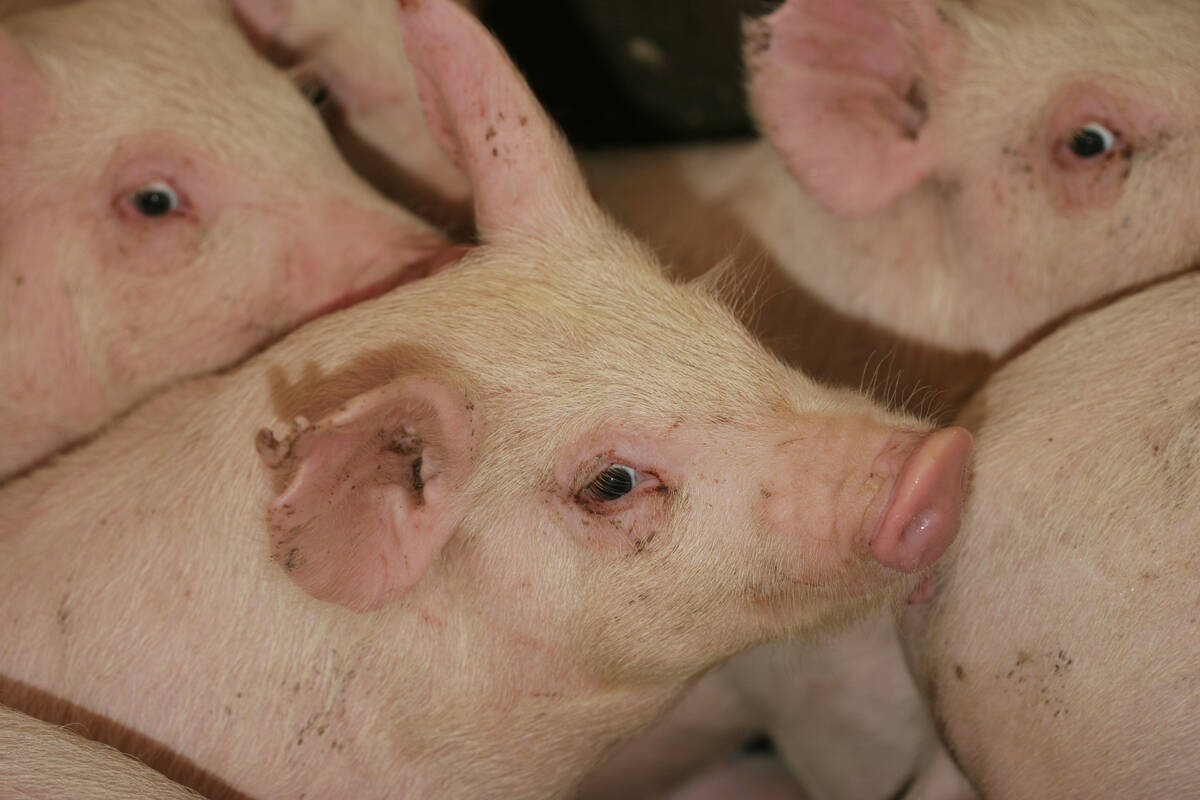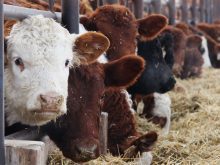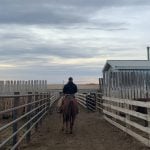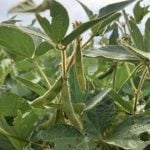An anticipated 30 percent increase in legume production in Western Canada in the next two years will offer lower cost feed to pig producers.
Eduardo Beltranena, a feed research scientist with Alberta Agriculture, said producers need to watch for legumes not suitable for human consumption that could end up as feed.
“With such an increase in legumes, it will pay them to have someone looking for pea splits and lentils.”
Beltranena told the Saskatchewan Pork Industry Symposium in Saskatoon Nov. 19 that pigs’ predominantly grain-based diet will be under strong pressure as ethanol production increases demand for grain.
Read Also

The Western Producer Livestock Report – September 25, 2025
The U.S. national live price average for barrows and gilts was $81.21 Sept. 17. It was $78.37 Sept. 9. U.S. hogs averaged $106.71 on a carcass basis Sept. 17, up from $106.10 Sept. 9.
He said the variety of byproducts from these industries, such as dried distillers grain and canola meal, could reduce imports of soybean meal.
Glycerol from biodiesel is highly digestible and could go into nursery diets, he added.
“The higher the grain prices go, the more they look at these coproducts,” he said. “They will be in oversupply, so will be cheap to feed.”
Further research is needed to study the risks in using these products, determining a good mix of rations, investigating their nutrient values and creating a reduced fibre canola meal.
“Fibre is not a friend of the pig,” Beltranena said.
David Reimann of Informa Economics encouraged producers to tinker with rations and find the cheapest possible feed.
“Use all the options you have available to you,” he said.
He agreed there could be good opportunities to use peas in Western Canada. Lower-than-expected sales of food peas to India could redirect them into domestic feed markets, he added.
Hog producers living near canola crushing plants should also look for opportunities because the product has a limited shelf life and could see prices drop.
Reimann said a much larger feed supply is coming on stream in the short term and felt livestock herd reduction would lead to better values in the long term. He told producers to expect continued volatility in feed markets, with modest improvements by mid-year.
“We’re in pretty desolate territory now, ” he said.
He encouraged producers to follow the markets, buy feed during the lows and avoid buying during price run-ups and market rallies.
“We want to watch the opportunity to buy into those dips,” he advised.
Careful analysis of barn operations can also help reduce barn feed costs, said Denise Beaulieu, a research scientist at the Prairie Swine Centre.
She said it may be possible to deliver a lower cost diet and improve profitability.
“It doesn’t pay to push pigs to the max,” Beaulieu said.
She recommended monitoring the feed budget, keeping track of which ingredients are adding to feed costs and not paying dividends. Track what pigs are eating and how much feed has been delivered to the barn.
To further avoid feed waste, make feeder adjustments and replace aging feeders with wet-dry ones.
“There’s nothing new in this, but all the details will add up,” she said.
“Go back and review.”














